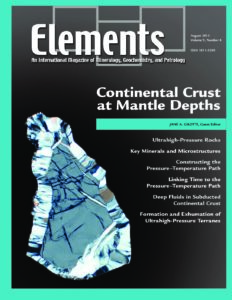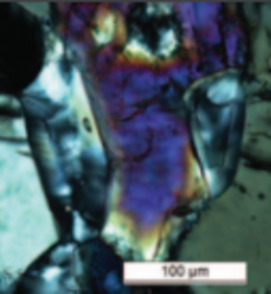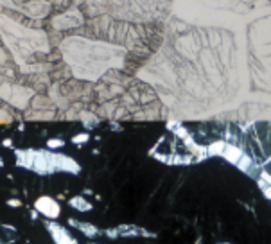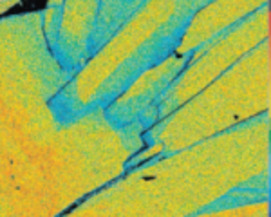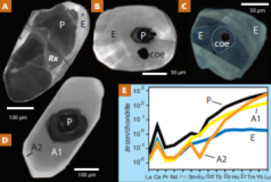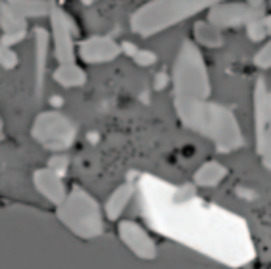
Continental Crust at Mantle Depths
Jane A. Gilotti – Guest Editors
Table of Contents
The discovery of diamond and coesite in crustal rocks is compelling evidence that continental material has experienced pressures that can be achieved only at mantle depths. The classical idea that continents are too buoyant to subduct has given way to the notion of density changes driving deep subduction during the collision process, thus enabling some crust to be exhumed to the surface and the rest to sink into the mantle. Over twenty localities of unequivocal conti- nental crust containing diamond or coesite are now recognized around the globe, and their study constitutes a new field in petrology, dubbed ultrahigh-pressure metamorphism. Using microscopic observations, phase equilibrium modeling, geochronology, and geodynamic modeling, we track the journey of ultrahigh- pressure rocks to the mantle and back. Continental ultrahigh-pressure terranes impact our understanding of plate tectonics through time, crustal recycling and mantle geochemistry, melting in subduction zones, and collisional processes in general.
- The Realm of Ultrahigh Pressure Metamorphism
- Continental Crust at Mantle Depths: Key Minerals and Microstructures
- Constructing the Pressure–Temperature Path of Ultrahigh-Pressure Rocks
- Linking Time to the Pressure–Temperature Path for Ultrahigh-Pressure Rocks
- Deep Fluids in Subducted Continental Crust
- Formation and Exhumation of Ultrahigh-Pressure Terranes
Applied Spectra
Australian Scientific Instruments (ASI)
Bruker
Bruker Nano
FEI
Excalibur Mineral Corporation
Gemological Institute of America (GIA)
Geochemist’s Workbench
IUMAS meeting
JEOL
McCrone Microscope and Accessories
Rigaku
Savillex
SPECTRO
TSI
v9n5 NITROGEN AND ITS (BIOGEOCOSMO) CHEMICAL CYCLING
Guest Editors: Gray E. Bebout (Lehigh University), Marilyn L. Fogel (Geophysical Laboratory) and Pierre Cartigny (Institut de Physique du Globe de Paris)
Nitrogen is the most abundant element in Earth’s atmosphere and a key compo- nent of the biosphere. It is also a critical part of the surface/near-surface cycling of nutrients, thus directly impacting our lives. Changes in the biogeochemical cycling of nitrogen through Earth’s history could reflect fundamental changes in its pathways from inorganic to biological reservoirs in response to change in the environment (e.g. oxygen fugacity in the atmosphere and oceans). Recognition of the importance of nitrogen to life on Earth, and likely elsewhere in the Solar System, has led to the mantra “Follow the Nitrogen” as one vehicle for focusing efforts in the search for extraterrestrial life. Nitrogen serves as a useful tracer of the transfer of “organic” signatures into the deep Earth (in records preserved in metamorphic and igneous rocks and in volcanic gases and rocks). It has been speculated that biological fi xation of nitrogen and storage in rapidly forming continental crust has led to drawdown of nitrogen from the early-Earth atmo-sphere, strongly influencing the chemical evolution of the atmosphere and related surface conditions.
- Nitrogen: Highly Volatile yet Surprisingly Compatible Gray E. Bebout (Lehigh University), Marilyn L. Fogel (Geophysical Laboratory, Carnegie Institution for Science), and Pierre Cartigny (Institut de Physique du Globe de Paris)
- Stable Isotopes as Tracers of Anthropogenic Nitrogen Sources, Deposition, and Impacts Meredith G. Hastings (Brown University), Karen L. Casciotti (Woods Hole Institution), and Emily M. Elliott (University of Pittsburgh)
- Biogeochemical Cycling of Nitrogen on the Early Earth Christophe Thomazo (University of Bourgogne) and Dominic Papineau (Boston College)
- Nitrogen in the Silicate Earth: Speciation and Isotopic Behavior during Mineral–Fluid Interactions Vincent Busigny (Institut de Physique du Globe de Paris) and Gray E. Bebout (Lehigh University)
- Nitrogen Isotopes and Mantle Geodynamics: The Emergence of Life and the Atmosphere– Crust–Mantle Connection Pierre Cartigny (Institut de Physique du Globe de Paris) and Bernard Marty (CRPG, Nancy)
- Nitrogen in Extraterrestrial Environments: Clues to the Possible Presence of Life Marilyn L. Fogel (Geophysical Laboratory, Carnegie Institution for Science) and Andrew Steele (Geophysical Laboratory, Carnegie Institution for Science)
- One Hundred Years of Geochronology (February 2013)
- Serpentinites (April 2013)
- The Mineral-Water Interface (June)
- Continental Crust at Mantle Depths (August 2013)
- Nitrogen and Its (Biogeocosmo)Chemical Cycling (October 2013)
- Garnet: Common Mineral, Uncommonly Useful (December 2013)
Download 2013 Thematic Preview


